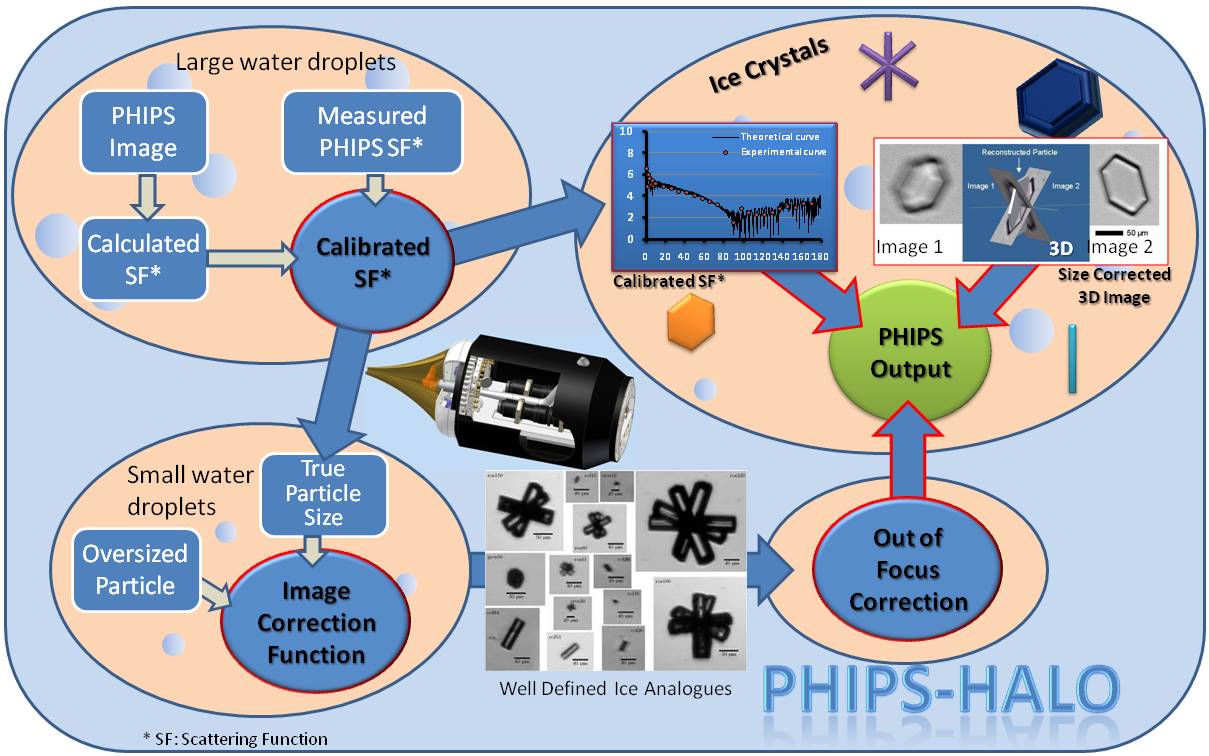AMOSIL
- contact:
Dr. Martin Schnaiter
- project group:
Dr. Ahmed Abdelmonem, Dr. Martin Schnaiter, Prof. Dr. Thomas Leisner, Dr. Jacob Fugal (University of Mainz), Prof. Dr. Stephan Borrmann (Max Planck Institute for Chemistry, Mainz)
- funding:
DFG SPP 1294 (Instrumentation for the HALO aircraft)
- startdate:
01.01.2008
- enddate:
31.05.2014
 The overall goal of this joint project is to develop and characterise four recently devised optical methods for the determination of the microphysical and optical properties of ice cloud elements and make them available for in situ measurements with the new research aircraft HALO. The link between the microphysical properties and the scattering function of ice particles is essential to improve our knowledge of the radiative properties of cirrus clouds and their potential change by anthropogenic activities. The four instruments are the PHIPS (Particle Habit Imaging and Polar Scattering) and the SID-3 (Small Ice Detector Mk 3) probes from Karlsruhe Institute of Technology as well as the CIP (Cloud Imaging Probe) and the holographic instrument HALOHOLO from the University and the Max-Planck-Institute for Chemistry in
The overall goal of this joint project is to develop and characterise four recently devised optical methods for the determination of the microphysical and optical properties of ice cloud elements and make them available for in situ measurements with the new research aircraft HALO. The link between the microphysical properties and the scattering function of ice particles is essential to improve our knowledge of the radiative properties of cirrus clouds and their potential change by anthropogenic activities. The four instruments are the PHIPS (Particle Habit Imaging and Polar Scattering) and the SID-3 (Small Ice Detector Mk 3) probes from Karlsruhe Institute of Technology as well as the CIP (Cloud Imaging Probe) and the holographic instrument HALOHOLO from the University and the Max-Planck-Institute for Chemistry in
- Develop fully automated control systems and data acquisition software.
- Test these instruments under real atmosphere conditions.
- Develop automated image data analysis tools that extract microphysical particle parameters from the instrument data sets.
- Compile the certification documentation for PHIPS and HALOHOLO and conduct the flight safety certification.
The tasks (i) and (iii) can be achieved through dedicated test campaigns at the cloud simulation chamber AIDA. The development task inherent in (iii) requires major efforts as it is the key to the final instrument deliverables of SID-3, PHIPS and HALOHOLO.
